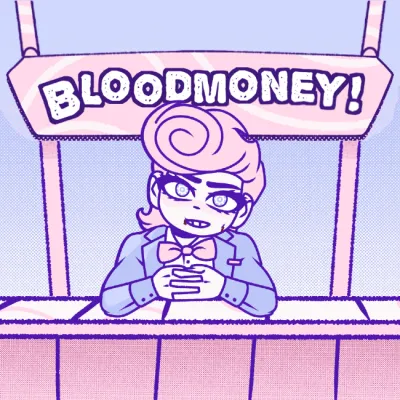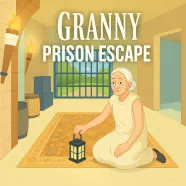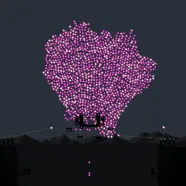The Apex Predator's Doctrine: An Analysis of Horror and Strategy in Deer Cannibal: 99 Nights in the Forest
You've survived a few nights. You've tasted the grim necessity of the hunt. But you now understand that Deer Cannibal: 99 Nights in the Forest is more than just a simple survival game. It is a psychological marathon, a grim simulation of nature's ultimate taboo, and a deep, unsettling puzzle of ruthless efficiency. This is not a guide for the faint of heart. This is an advanced analysis for the player who seeks to become the apex predator of this cursed wood. We will deconstruct the game's brilliant psychological horror, explore the optimal strategies for resource management, and delve into the unspoken narrative that makes Deer Cannibal: 99 Nights in the Forest so hauntingly effective.
The Anatomy of Fear: The Corruption of Innocence
- Forced Complicity: You are not watching a monster; you are becoming one. Every successful hunt is a victory for your survival but a defeat for your sense of natural order. The game's horror is in this forced complicity. You are the villain of the story, and the game will not let you forget it.
- The Silent Scream: The game's minimalist sound design is its greatest weapon. The quiet, lonely forest, punctuated only by the sounds of the hunt, creates an incredibly bleak and isolating atmosphere. The horror is in the silence, in the grim, methodical nature of your task. This is the core of the psychological dread in Deer Cannibal: 99 Nights in the Forest.
Advanced Strategy: The Mathematics of Survival
A master of Deer Cannibal: 99 Nights in the Forest thinks not in terms of single hunts, but in terms of energy expenditure versus caloric gain.
Risk vs. Reward: The Prey Hierarchy
- Fawns/Does (Low Risk, Low Reward): These smaller deer are easier to catch and less likely to pose a threat. They are your reliable, staple food source. A key strategy for long-term survival in Deer Cannibal: 99 Nights in the Forest is to build your subsistence on these easy hunts.
- Stags (High Risk, High Reward): Large stags provide a massive boost to your hunger meter, but they are faster, more difficult to corner, and may even be able to damage you in later nights. You should only attempt these high-risk hunts when you have a full health/stamina bar and a clear tactical advantage (e.g., you've already cornered them).
Mastering the Map: The Predator's Home Turf
The map in Deer Cannibal: 99 Nights in the Forest is your greatest tool. A pro player has a mental blueprint of the entire forest. They know the dead-end canyons, the dense clusters of trees, and the open fields. The entire game becomes about luring your prey into these pre-identified "kill zones." The hunt is no longer a random chase; it is a calculated execution on your home turf.
The Unspoken Lore: What is the Story of the Forest?
- A Cursed Land: The most common interpretation is that the forest itself is cursed, trapping its inhabitants in a loop of unnatural hunger and violence. The 99-night cycle is not a one-time event, but an eternal damnation.
- The Birth of a Monster: The game can be seen as a dark origin story. You begin as a normal deer, but by the 99th night, you have become a legendary, monstrous predator, the new terror of the forest. The true horror is that you have become the very thing you should fear. This is the dark, philosophical core of Deer Cannibal: 99 Nights in the Forest.
Conclusion: The Law of the Woods
Deer Cannibal: 99 Nights in the Forest is a brutal, minimalist masterpiece. It strips survival horror down to its grim essence: kill or starve. By embracing its dark philosophy, by thinking like a ruthless and efficient predator, and by understanding the tragic story it tells, you can not only survive its challenge but also appreciate its profound, unsettling artistry. You have learned the one, terrible law of this forest. Now go and enforce it. Master the world of Deer Cannibal: 99 Nights in the Forest.























